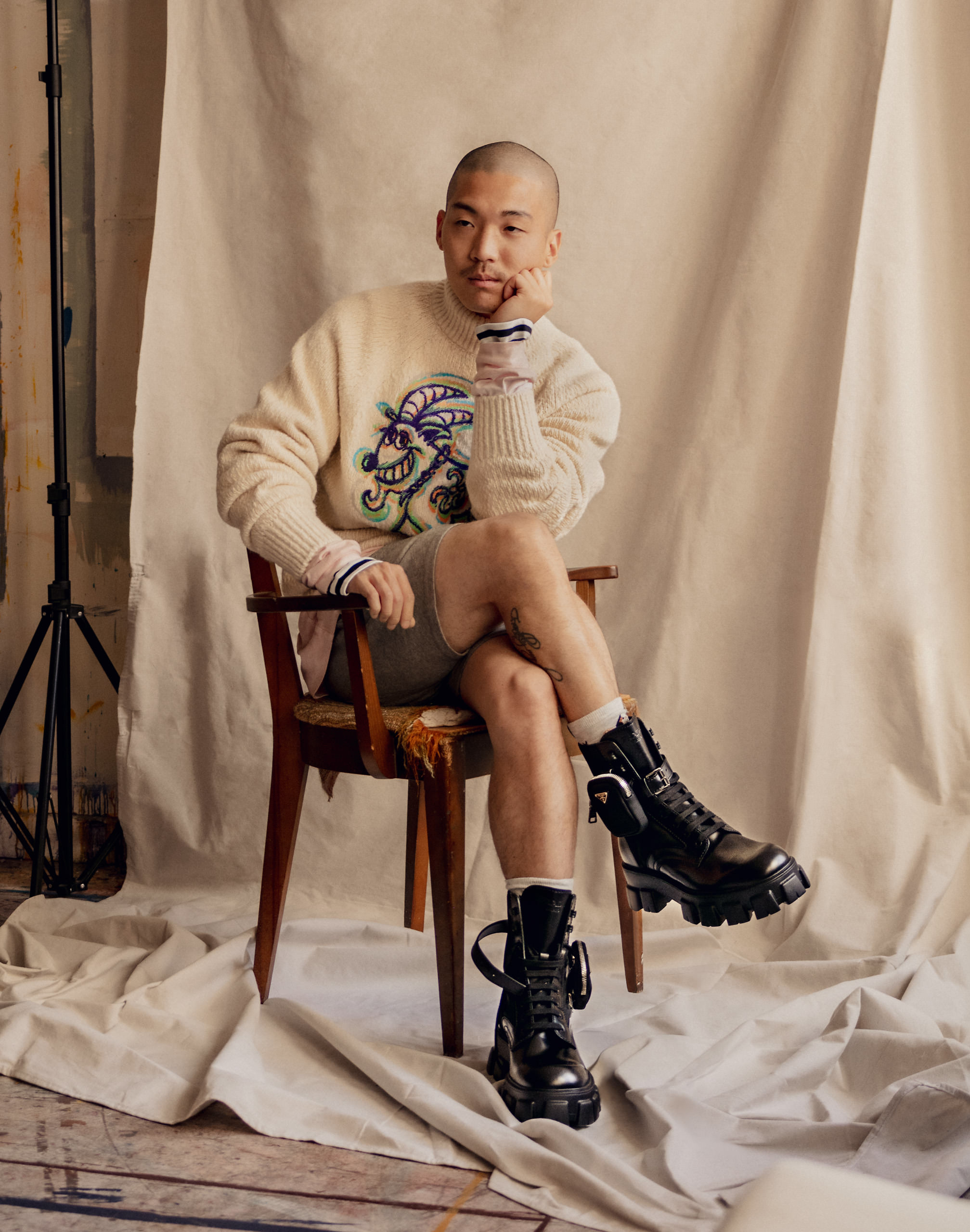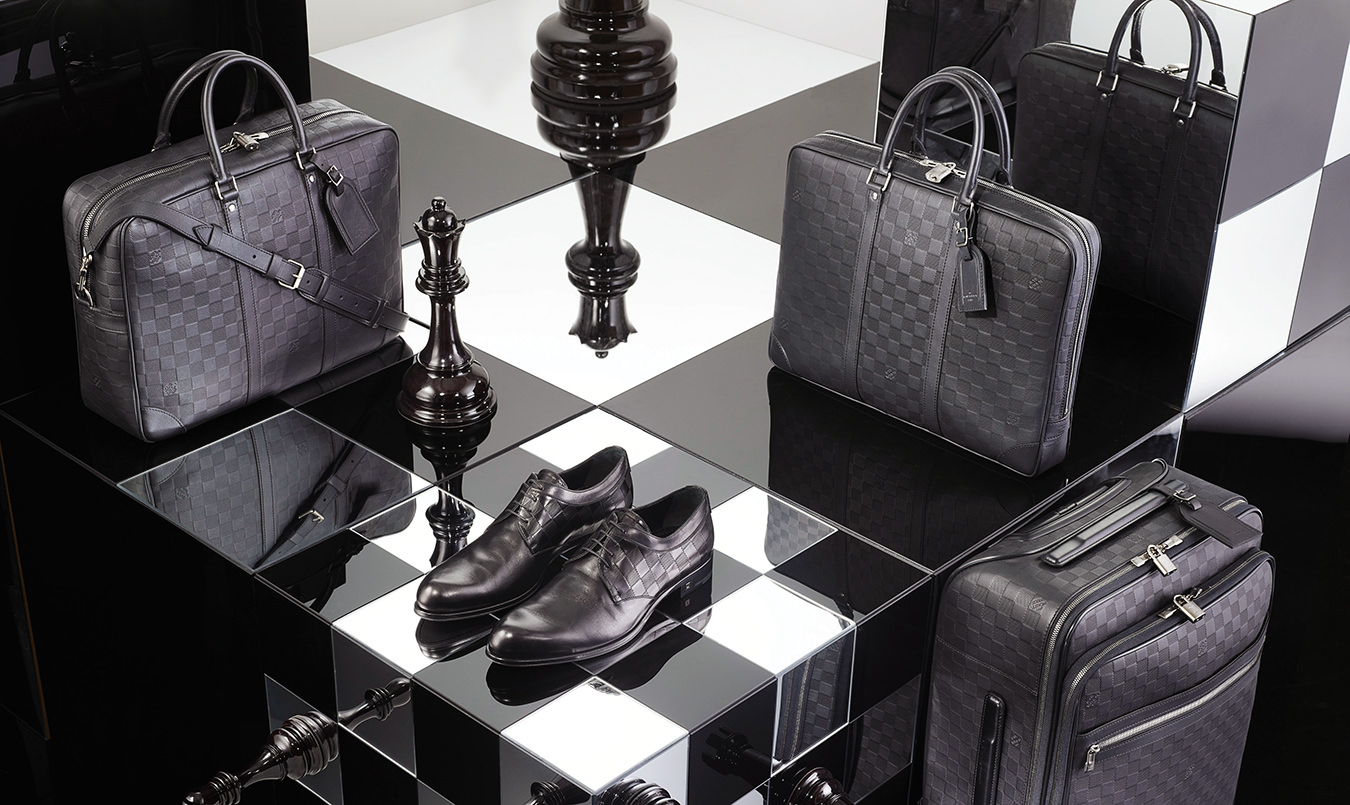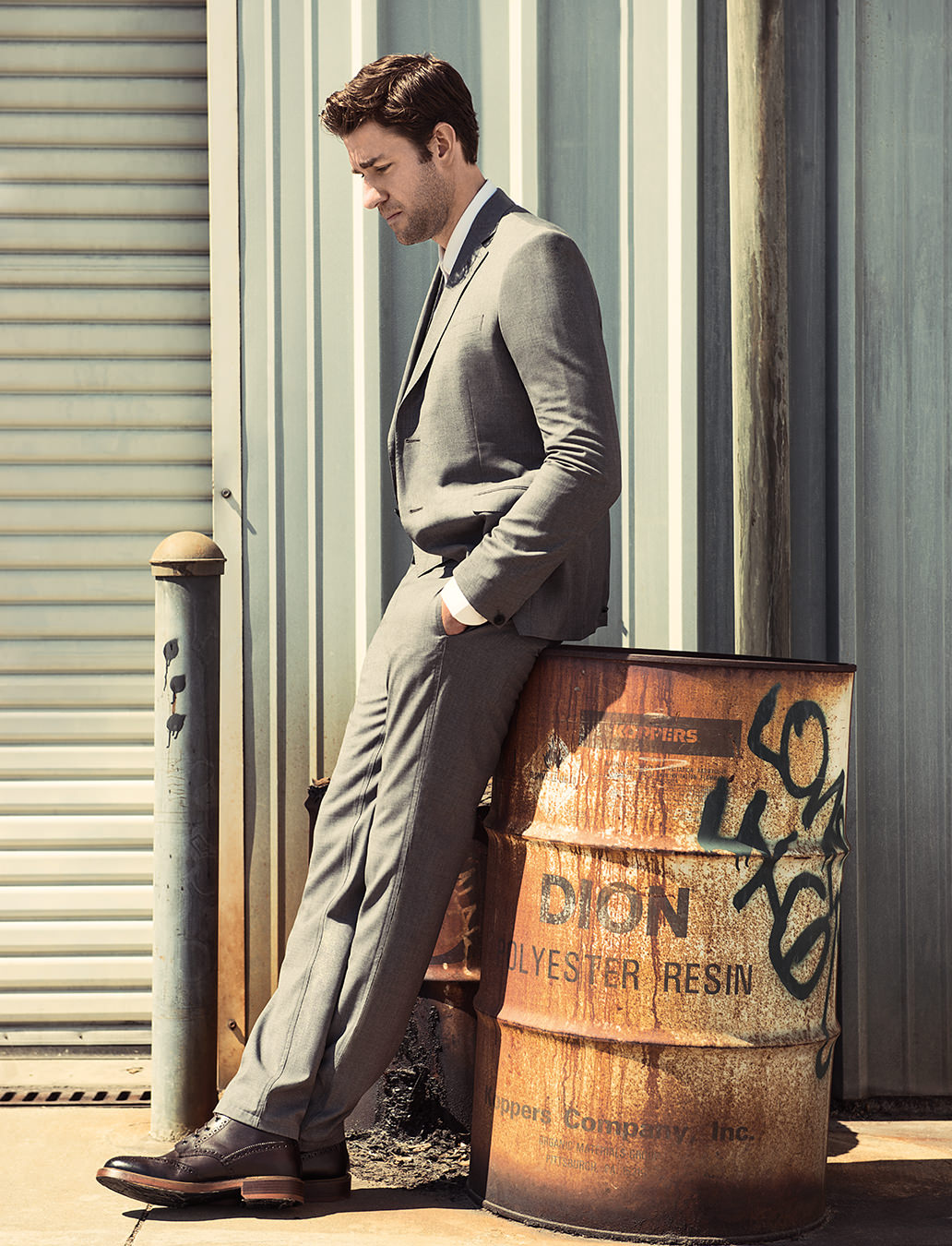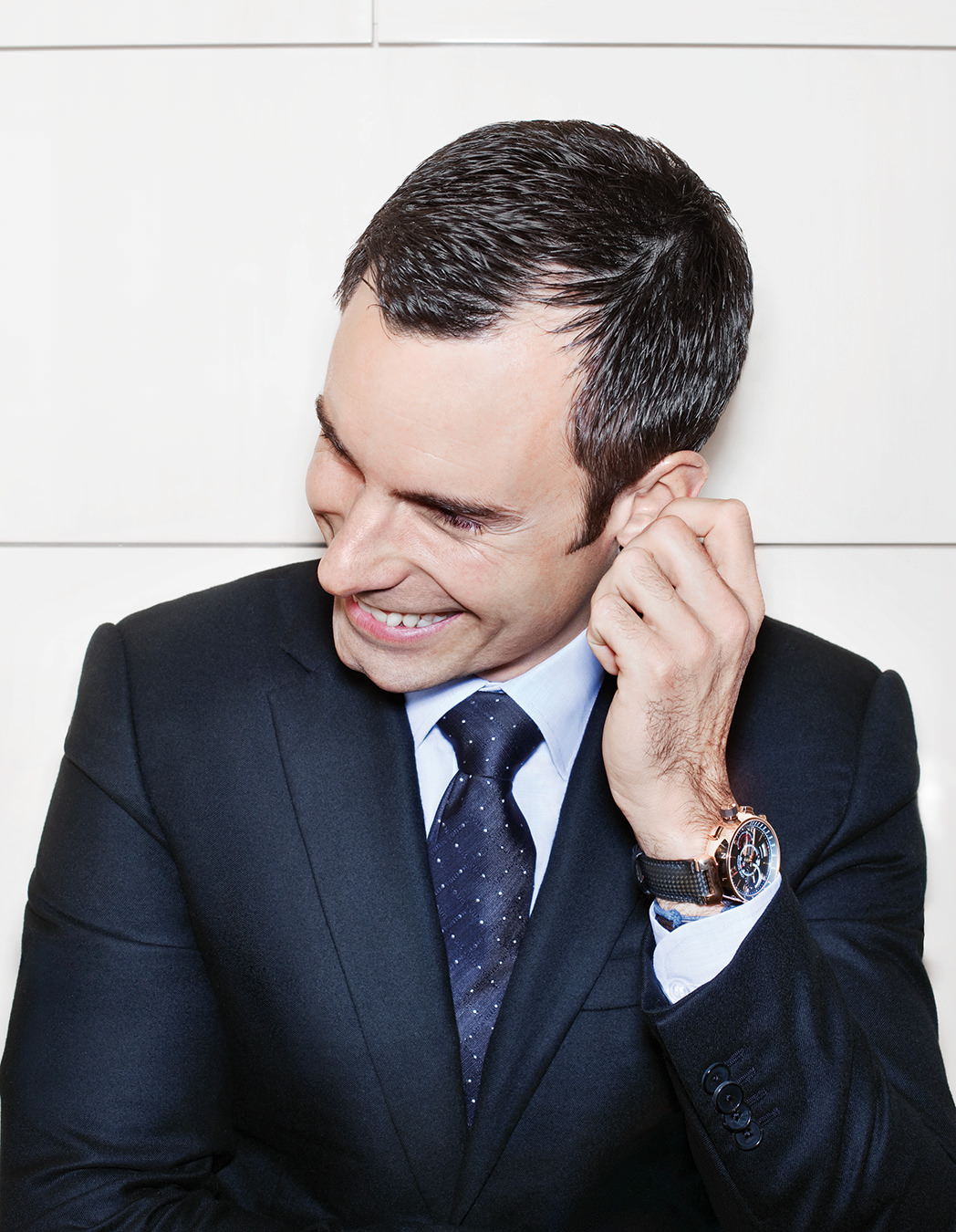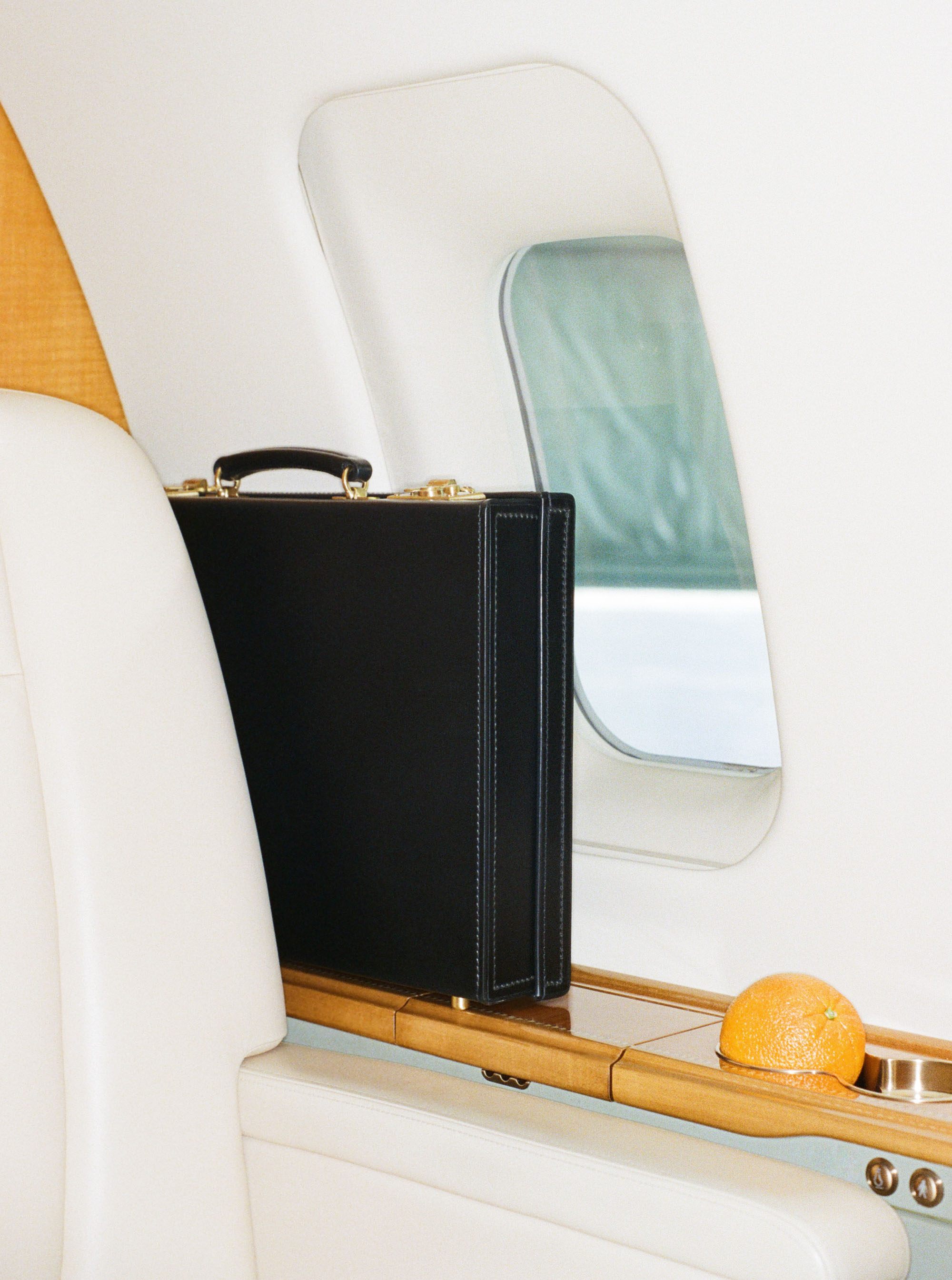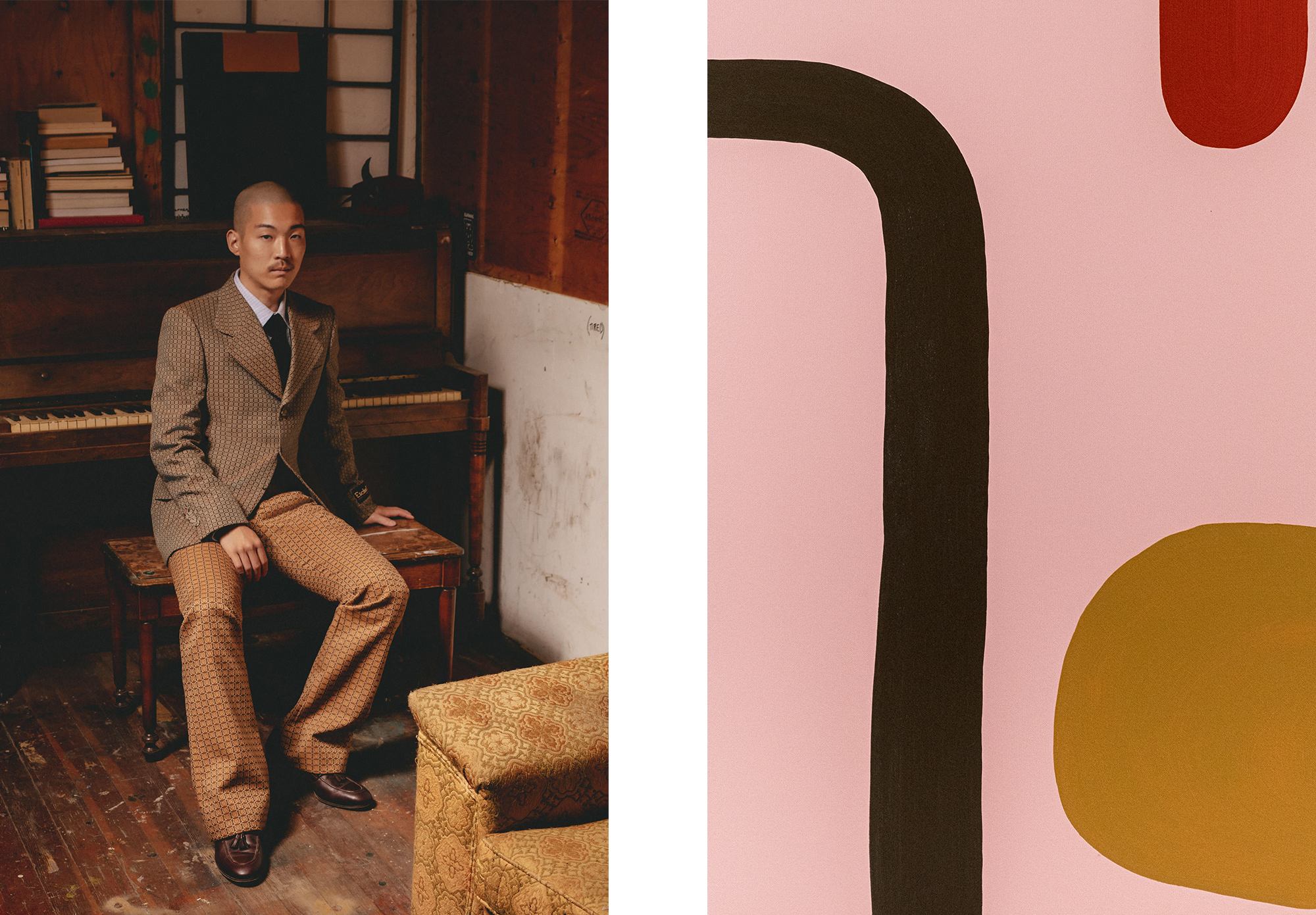
Left: Joon Lee in Gucci. Right: <i>It’s a Bad Grape</i>, 2021, by Joon Lee.
Artist Joon Lee and the Insatiable Urge to Create
Talking in colour.
_________
There are artists whose work cannot be rushed; who create only when charged with a jolt of inspiration; who reject the notion that creativity can be flipped on and off at will. Instead, they wait patiently for a divine sense of clarity to spark their next piece, but only when the time is right.
Joon Lee is not one of those artists.
In his Vancouver studio with an enormous canvas titled Lemon and Tomato towering behind him, featuring four imperfect yellow and burgundy orbs on a dark-blue background, Lee comes across as a creative mind who would toil endlessly over the most complex details of a single piece. There’s a sense of patience and clarity in the way he discusses his life and career, but listening past the calm, steady cadence and philosophical detours, it becomes clear that Lee’s work is fuelled by an insatiable urge to create.
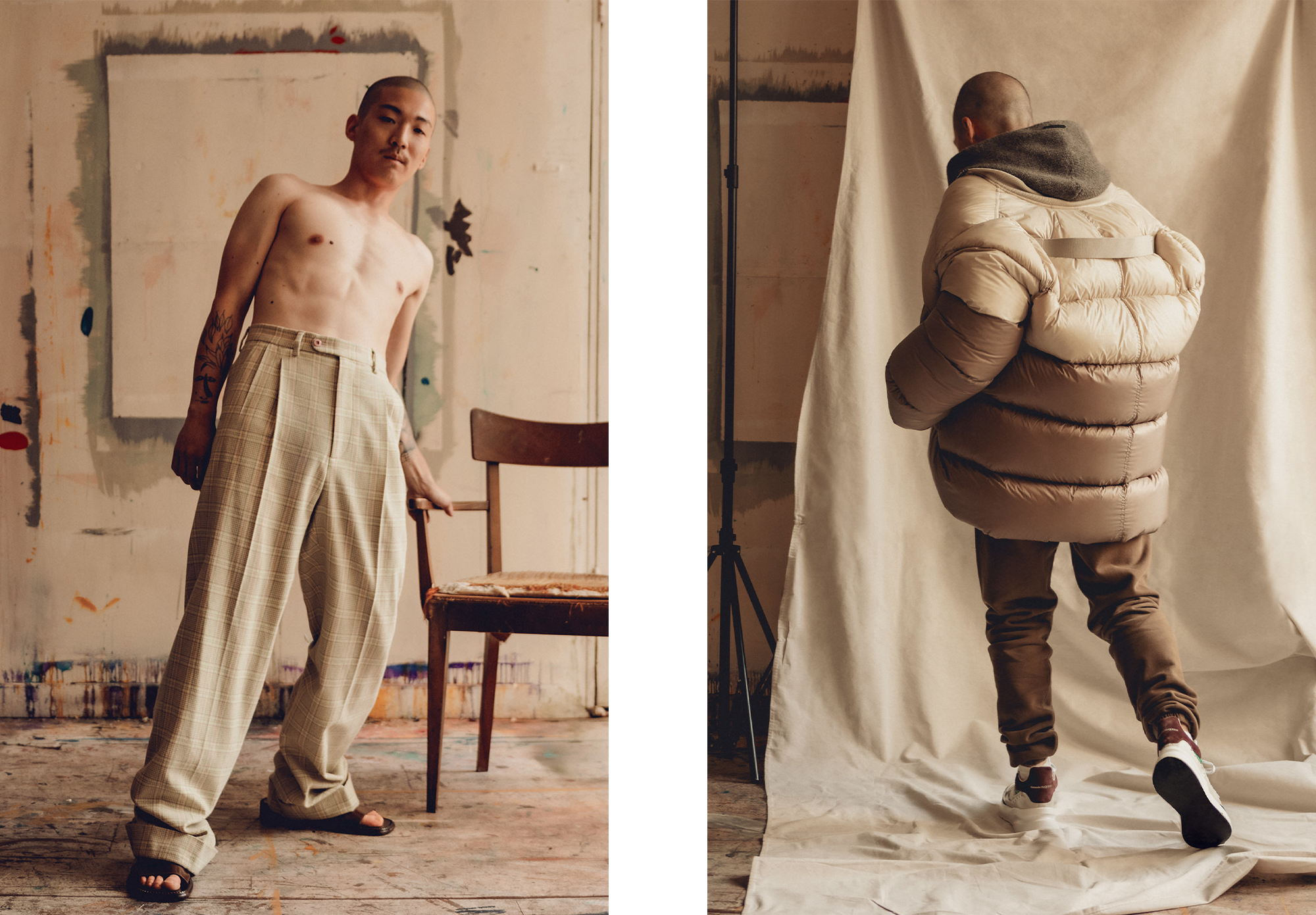
Left: Gucci. Right: Rick Owens puffer available at Holt Renfrew; Fear of God hoodie and sweatpants; Alexander McQueen sneakers, all available at Nordstrom.
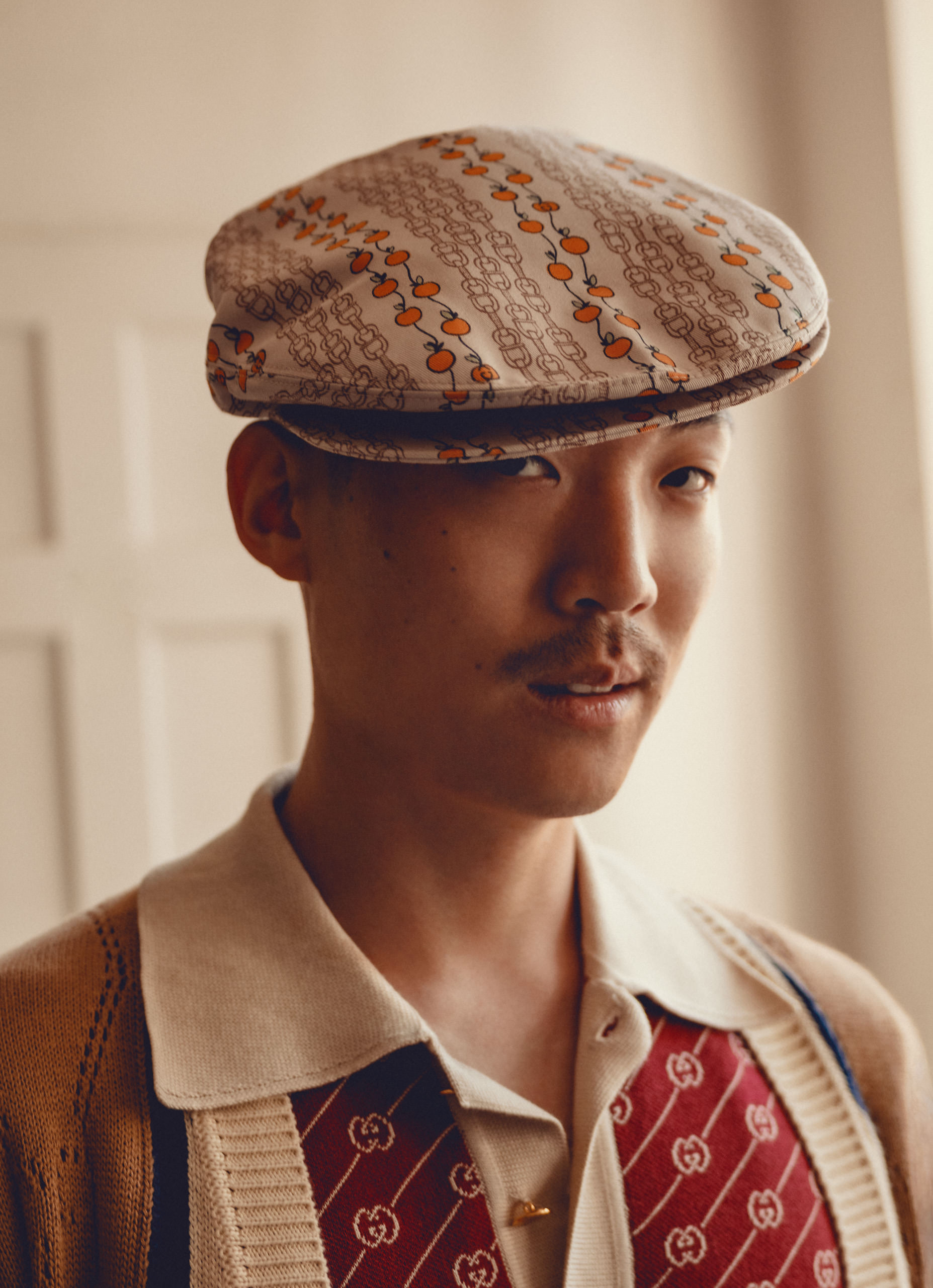
Gucci ensemble.
This constant stream of creativity has Lee focused on producing multiple canvases at a time. Some are placed for auction on his website; others are causalities of his whirlwind artistic process. But Lee’s drive to create innovative works, immerse himself in art history, explore untapped mediums, and reach new demographics isn’t powered by monetary gain or critical acclaim but rather the opportunity to be in constant conversation with himself and the world around him.
“I put my experiences on canvas,” he explains. “Most of what I make reflects my internal rhythm of emotion … but it’s also a balance of trying to distance from strictly my own experience and reflect those around me, what I consume, what I’m inspired by.”
His most recent collection is a series of colourful acrylic paintings, appropriately titled I Eat Colour and Talk in Shapes. It marks the 28-year-old’s latest complete abstract series and his most minimalistic, a brash diversion from his previous work; he instead uses space and simplicity to place focus on his work’s reductive measures. “I let the colours and the shapes and these organic rhythms tell me their individuality, for them to tell me, ‘This is who I am,’ rather than me tell them, ‘This is who you are,’ ” Joon says.
_________
“I let the colours and the shapes and these organic rhythms tell me their individuality, for them to tell me, ‘This is who I am,’ rather than me tell them, ‘This is who you are.’”
At first glance, the collection is a series of large, warmly coloured shapes contrasted with cold-toned settings, but like the rest of Lee’s work, each piece speaks volumes. Instead of canvases covered edge-to-edge in a flurry of intricate brush strokes, the shapes and their relationship signify more than initially meets the eye, as he sets out to expose the anomaly behind the social construct between conventional and abnormal beauty.
Whether he is expressing himself on a six-foot canvas or commenting on the world around him through a myriad of viral collages shared on his Instagram feed, Lee’s ability to breathe life into minimalistic expressions of form and colour illustrates the intimate relationship between himself and his work. It’s a relationship formed over years of wrestling with validation, self-discovery, and self-expression that began in his most formative years.
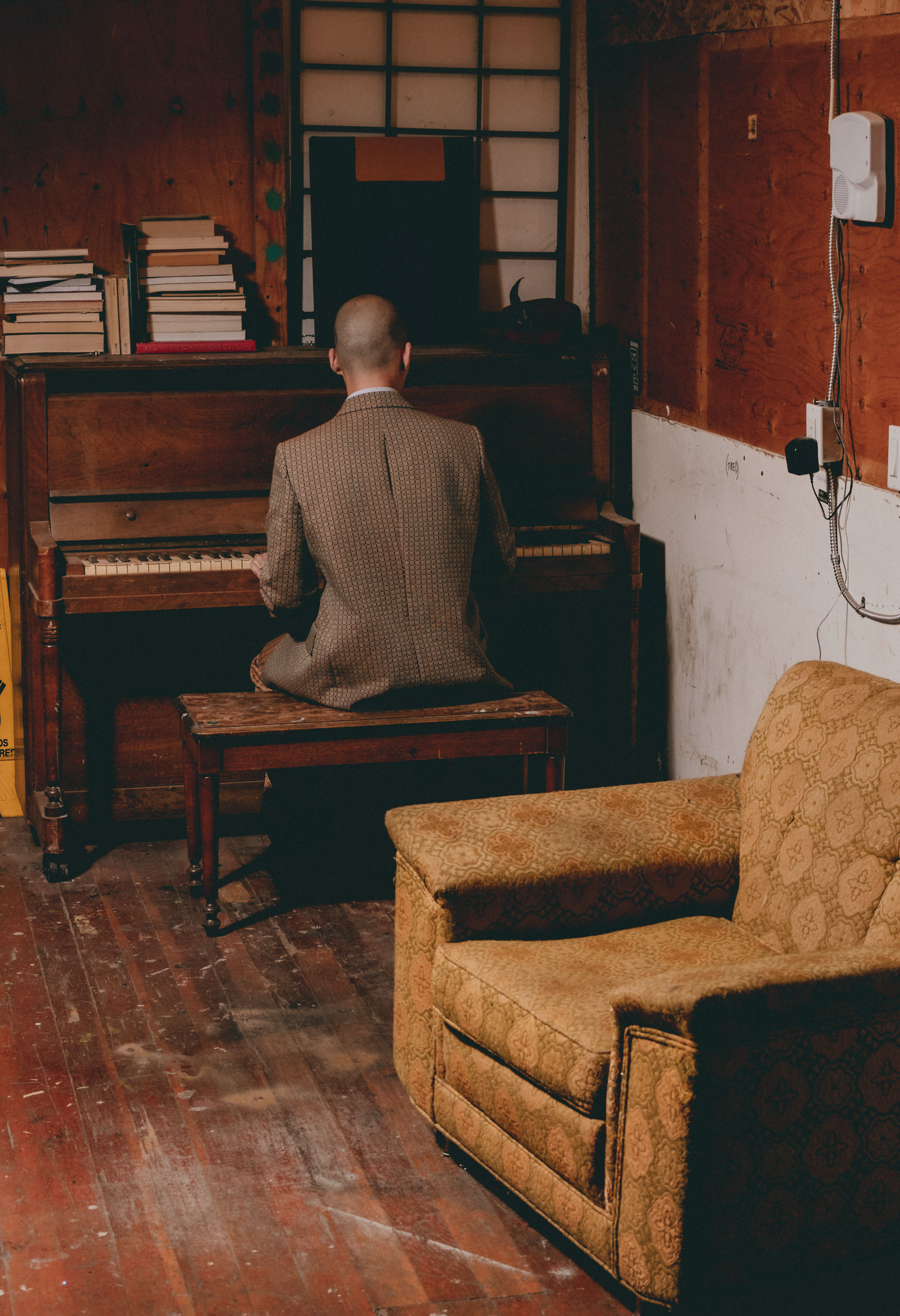
Joon Lee in Gucci in his Vancouver studio.
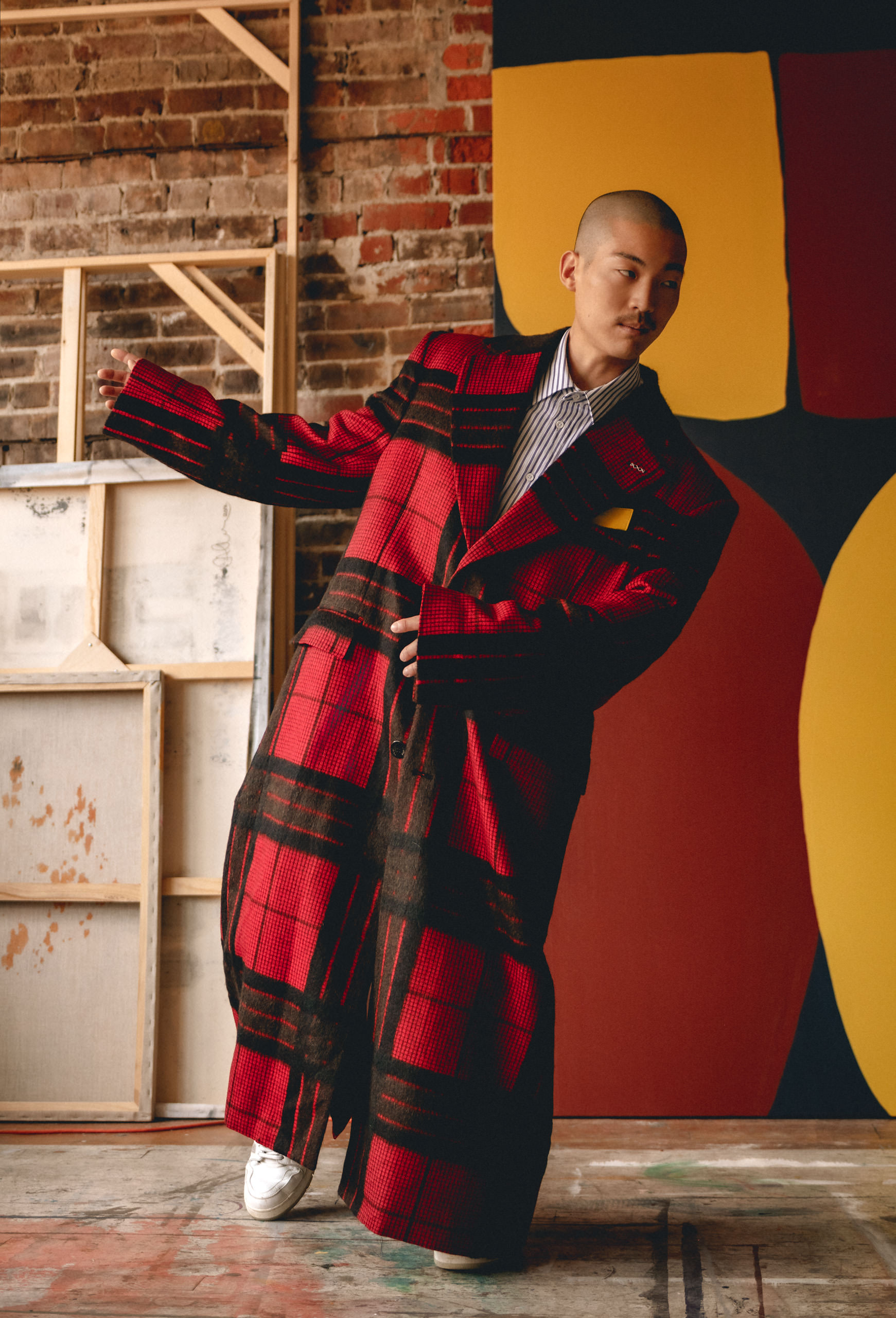
Louis Vuitton ensemble.
“I’m always trying to create something from my troubled past,” Lee says, reflecting on the earliest origins of his work. “From a childhood where there was a lot of rage and anger in the family … to the time period where I was heavily influenced by drugs and alcohol, not seeing where I was going to lead my life, and then creating this type of work of collages, [it was] something inviting and warm and pleasant. It was a way of juxtaposing my life and my attitude.”
With each completed project, he found pockets of clarity, brief snapshots of intelligibility regarding his work, where it came from, and what he still hoped to explore. These moments of clarity allowed Lee to rediscover himself, but in offering his art to the public, he also struggled to negotiate between creating for himself and for his rapidly expanding audience.
“I grew in popularity back in 2017,” he explains, recalling a series of collages that exponentially grew his Instagram engagement over eight months. The first was Isolation, a brilliant collage contrasting scenes of a remote nature expedition with an overcrowded suburban landscape. On social media, it’s often difficult to pinpoint what drives such rapid growth, but whatever algorithm led the public to Lee’s page had clearly worked. His ensuing pieces found similar success online as his newly acquired followers fell in love with his ability to surreally comment on the world around him.
It was a delicate balance between staying true to the creative process that helped him reconstruct his life and appeasing the audience he had cultivated. “I fell into that trap very quickly,” he admits. “And then I became sad because I didn’t know what to make for myself. I realized I needed to take a break from being creative altogether.”
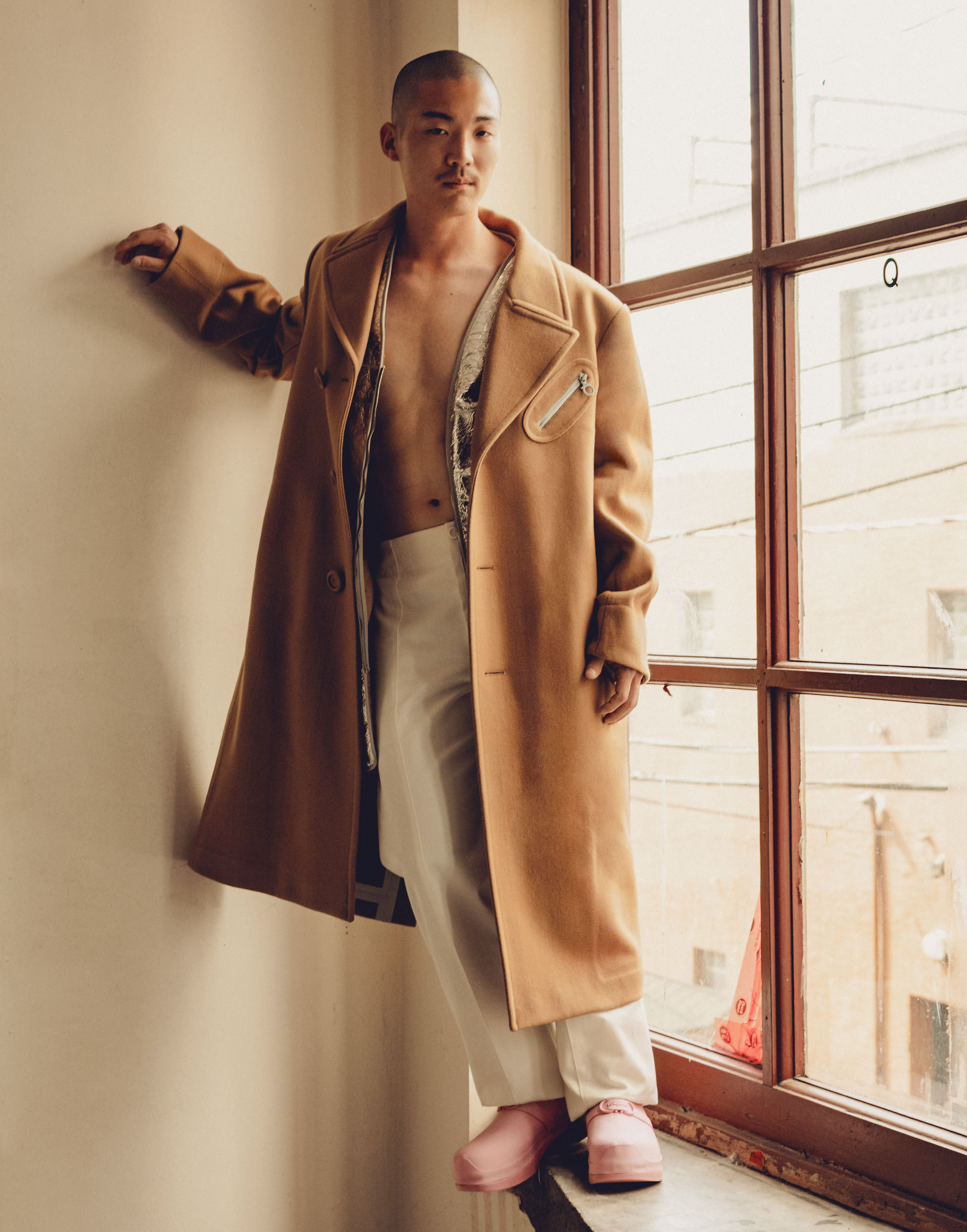
Salvatore Ferragamo ensemble.
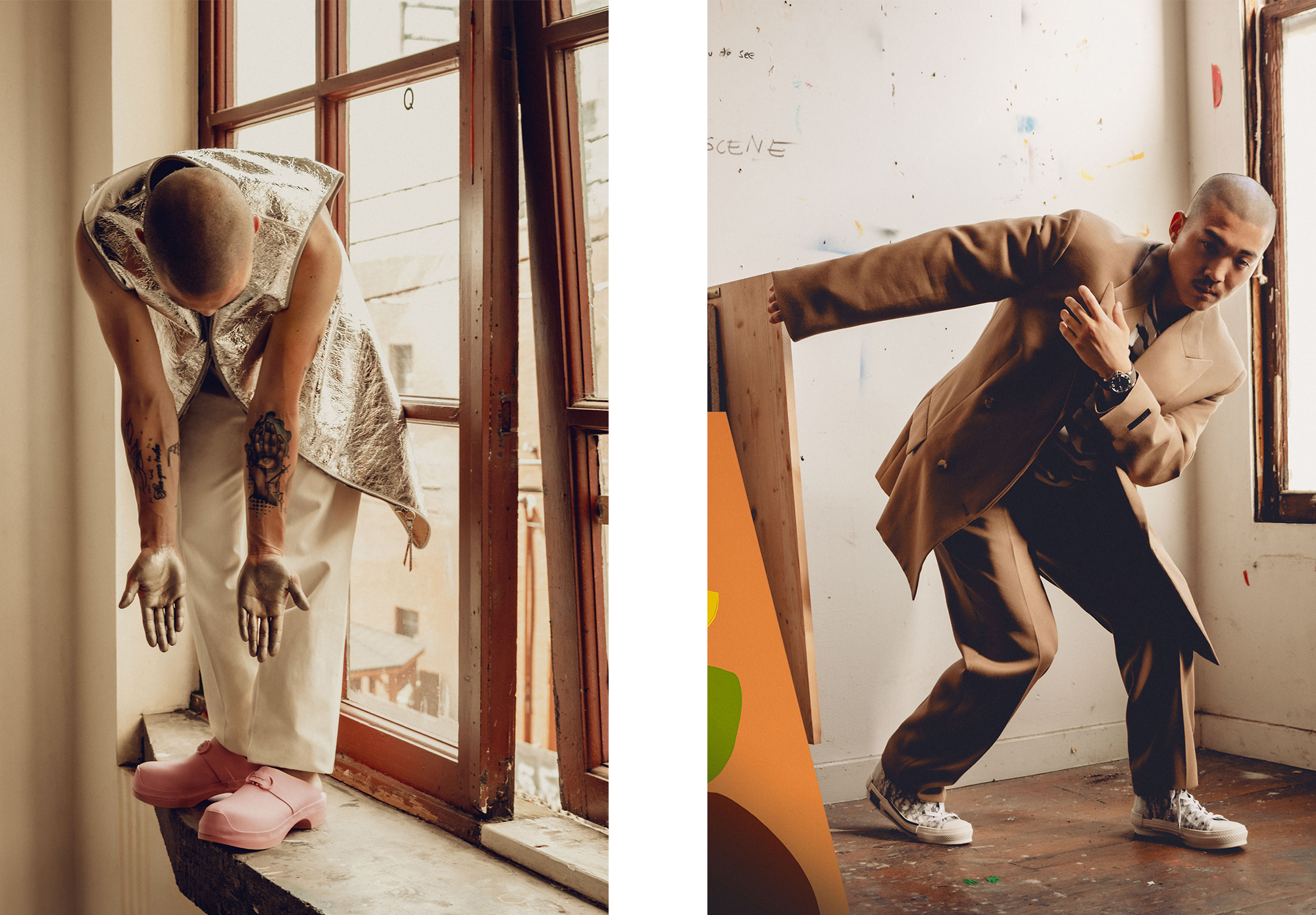
Left: Salvatore Ferragamo. Right: Fear of God blazer and pants available at Nordstrom; Dries Van Noten sweatshirt available at Holt Renfrew; Longines HydroConquest watch in stainless steel, Sunray grey; Dior sneakers.
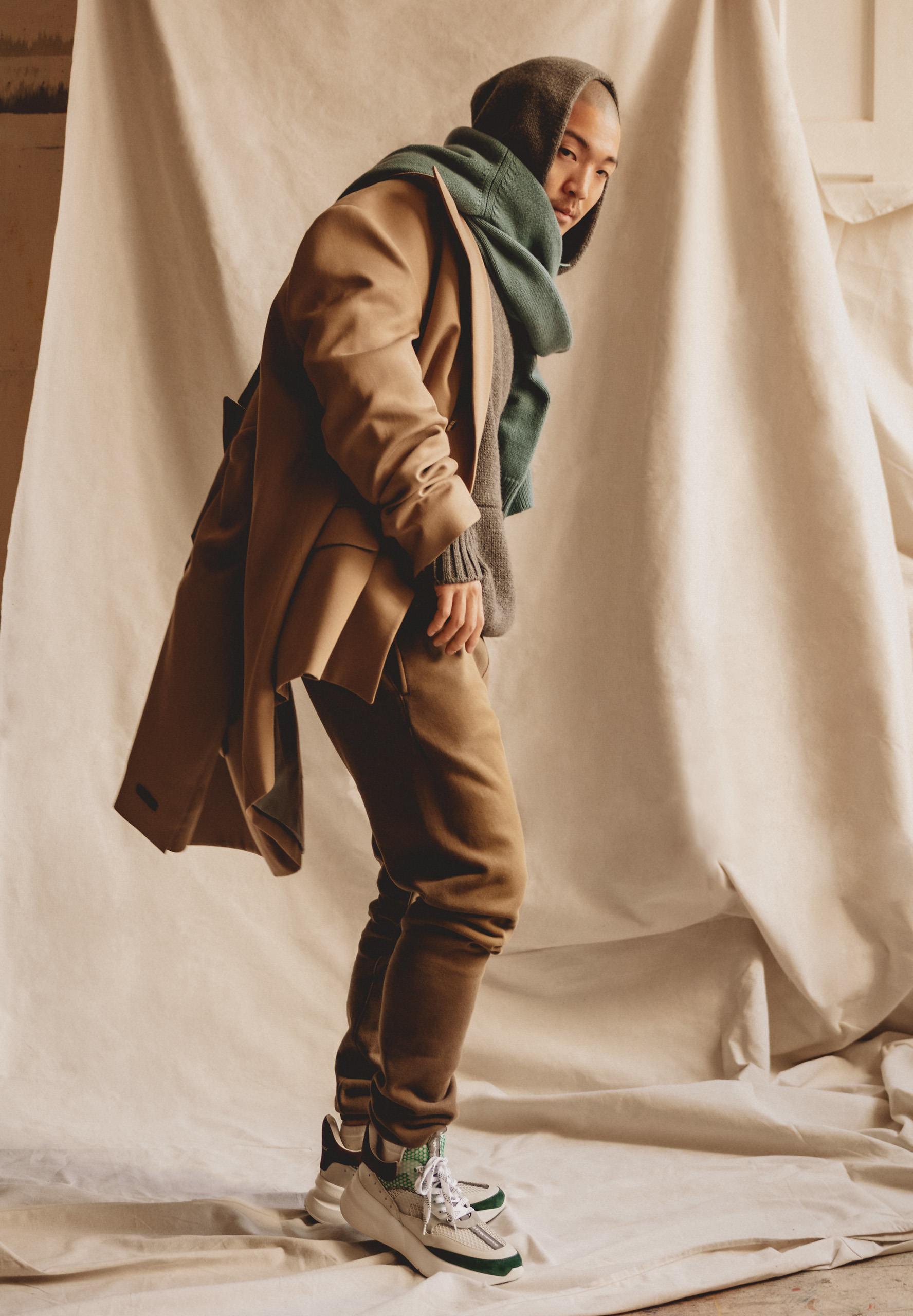
Fear of God hoodie, blazer, and sweatpants and Alexander McQueen sneakers, all available at Nordstrom; Hermès sweater as scarf.
Most artists would resist turning the page on the medium that launched their careers, but to Lee, the warm nostalgia of his sunny collages had offered him all they could. It was time to move on to a far less comfortable art form, one he had yet to explore. Now and again, Lee will post a collage for his hordes of followers between collections, but today his focus lies elsewhere, on large abstract canvases.
For years, Lee has existed in a constant state of progression, rushing toward whichever medium will host his next conversation. And yet despite the occasional lack of motivation, bouts of creative fatigue, and enough wasted paint to fill an entire collection, he continues his steady output, refusing to rely on anything but his own will. “The two words that I find most dangerous are ‘motivation’ and ‘potential,’ ” he says. “I like to focus on the disciplinary measures of creating. Even though a lot of people say you have to be motivated or you have to be inspired, I don’t believe that’s the case for me. I just push through it.”
But like a long-distance runner, there’s a fear that the moment one stops moving forward, the muscle begins to regress. Over time, that creativity might even atrophy. “I’m attracted to progression,” he explains. “So when I feel myself being stagnant, I have to break that instantly. That’s why I experiment with all types of forms.”
And yet not every artist can fend off the constant threat of stagnation. Even the greatest conversationalists eventually run out of breath. “I know there are going to be lulls, and when those lulls come, I know what mediums I want to tackle. There’s still so much I haven’t explored. I think that’s really why I got into the arts. There’s always more to say. There’s always something to explore.”
Grooming: Paula Lanzador for Nobasura. Assistant Stylist: Mackenzie Dunham. Producer: Ayesha Habib.


